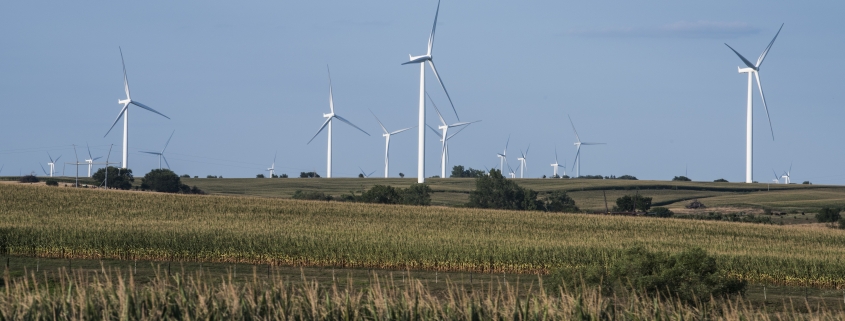Energy Myths Series: Changing Baseload Baseline
written by Kansas City Regional Clean Cities Coalition director David Albrecht
Electricity is tied to our lives in a way you might not expect, and not in the sense of necessity or convenience. Instead, our daily behavior, waking and sleeping, dictates how utilities generate power. As we wake up, hit the lights, fire up the microwave or turn up the furnace, demand rises. Through the day, generation increases to meet our needs. Demand peaks in late afternoon and starts dropping at 6:00 or 7:00 in the evening as we leave the factory or office and head home. This cycle changes with the seasons, with our use of air conditioning pushing demand to its annual high in summer. It also varies from region to region.
But whatever the season or region, from around 11:00 PM to 7:00 AM, electric utility output is at its lowest. This nightly low-level output is called baseload generation – the minimum needed for essential systems that run continuously – and it never stops. Baseload plants, typically coal or nuclear, run near or at capacity nearly all the time. They’re the biggest power plants since the formula “Bigger = Better” makes economic sense for systems in continuous operation. These plans are extremely efficient. They also run continuously because baseload plants are ferociously expensive. KCP&L (now Evergy) completed its 850 MW Iatan coal plant in 2010 at a cost of about $2 billion. The more continuous hours a plant that big and expensive runs, the sooner it can be paid off. Nuclear plants are far more expensive, but that’s a story for another article.
There’s another reason that coal and nuclear dominate baseload generation – time. As demand for electric power grows through the day, there’s no reason that it can’t be met by increasing output at another coal or nuclear plant. The question is how many hours or days later that electricity will arrive. It takes days to bring a nuclear plant from a cold shutdown to full power, and up to eight hours for a coal plant to hit peak output even from a warm start. On a 100F summer day, as air conditioner use spikes quickly to beat the heat, utilities don’t have hours to spare. That’s why a second breed of power plants exists – peaking plants, designed to quickly provide electricity above and beyond baseload.
Peaking plants are a very different animal from their baseload cousins. They’re generally smaller, and typically operate using natural gas or pumped hydroelectric storage, depending on location. They only operate for a limited number of days every year – as little as 10% of the time. They’re also much faster to respond to demand spikes and can start generating power in five to ten minutes. But speed has a price – they’re also far less efficient than baseload plants.
As demand rises, utilities have to produce more power. They have three options – producing more from what’s already online, bringing additional plants into service, or buying it from other utilities. All three options cost money. That’s why, as part of an overall movement towards deregulating electricity markets, some utilities now charge different prices for electricity, depending on when it’s needed. Peaking power at 4:00 PM in August is much more expensive than baseload power at 4:00 AM in January. On the other hand, if a utility has a surplus, they can sell it for far more. This evolving market is one of the reasons the industry is changing rapidly.
“There is nothing simple about operating a power grid.”
Other rapid changes are shifting the baseload baseline. One key reason is renewable. Other than the rapid growth in natural gas in the last 30 years, the big story has been wind. From producing very little at industrial scale as recently as the year 2000, wind energy now produces more power than hydroelectricity. But wind energy is generated at Nature’s pleasure. When the wind really blows, the question becomes what to do with all that surplus power. And when the wind doesn’t blow, what are the best resources to handle the load? Electricity isn’t water or soybeans or money – it can’t be stored at scale, at least not yet.
These are the challenges facing the power industry today as it adjusts to advancing energy generation technologies. Grid integration or smart-grid tech is an emerging technology capable of managing the challenge. It can handle variable amounts of energy from renewable sources, finding ways to store electricity, and maintaining reliable power supplies, meeting one of the biggest infrastructure and tech challenges we’ll face this century. Stay tuned. We’ll provide more detail on that promising solution, and more, in forthcoming articles.


